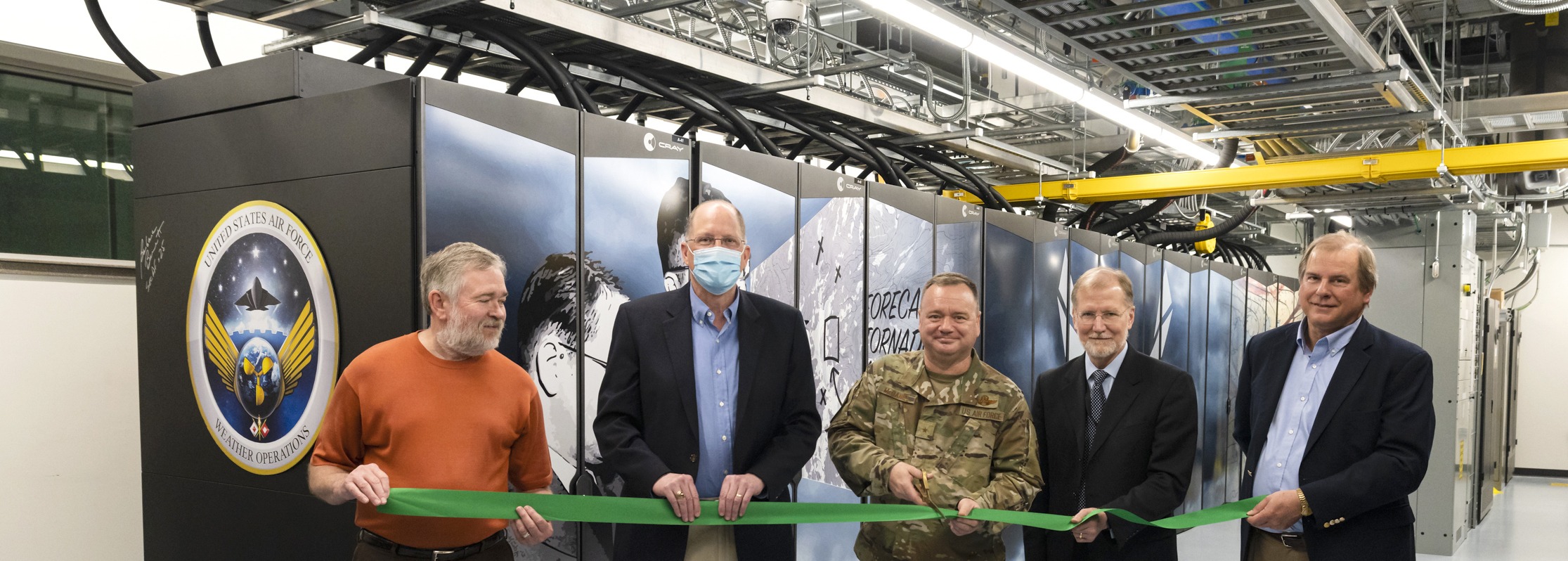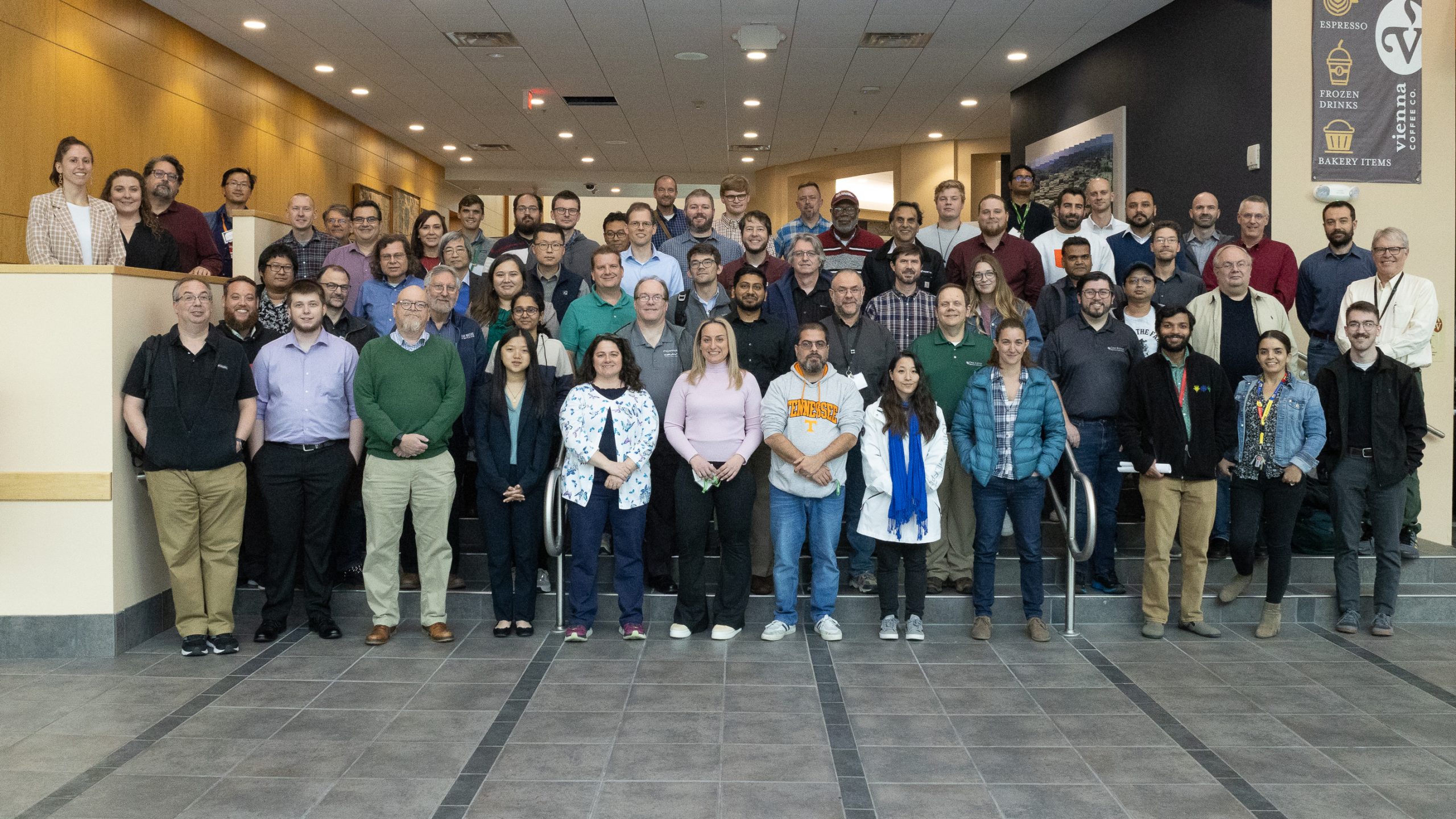On May 18, 2022, Oak Ridge National Laboratory (ORNL) and the National Center for Computational Sciences (NCCS) hosted members of the US Air Force for a ribbon-cutting ceremony to honor the deployment of a new high-performance computing (HPC) system for global weather forecasting. Although the system was launched in early 2021, a formal celebration was delayed because of COVID-19 related travel restrictions.
The system, known as HPC11, comprises two Hewlett Packard Enterprise Cray EX machines called Fawbush and Miller, which are named after two US Air Force meteorologists. Major Ernest Fawbush and Captain Robert Miller made the first operational tornado forecast in history at Tinker Air Force Base in 1948. The two computers are managed by the NCCS as part of a strategic partnership between ORNL and the Air Force Life Cycle Management Center.
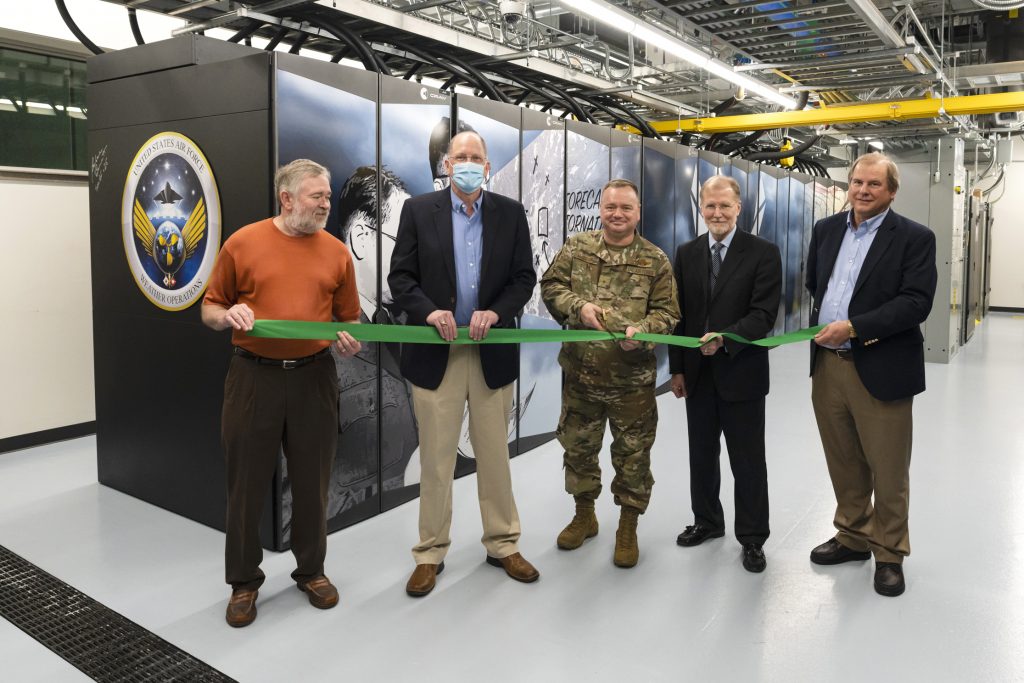
(From left to right) Jeff Nichols, Alan Icenhour, Brigadier General Charles McDaniel, Steven Wert, and Johnny Moore prepare to cut the ribbon in front of HPC11. The weather forecasting system was deployed in February 2021 and supports the modeling and operations needs of the Air Force Weather Program.
The ribbon cutting was attended by Air Force Director of Weather Brigadier General Charles McDaniel; Program Executive Officer (PEO) Digital for the Air Force Life Cycle Management Center Steven Wert; and members of Headquarters US Air Force, the Air Force Life Cycle Management Center, Air Combat Command, and the 557th Weather Wing. ORNL attendees included ORNL Site Office Manager Johnny Moore, Deputy for Laboratory Operations Alan Icenhour, and Associate Laboratory Director Jeff Nichols. The event was hosted by the NCCS and included NCCS Division Director Gina Tourassi, NCCS Air Force Weather Program Manager Dustin Leverman, NCCS Director of Facilities and Computing Jim Rogers, Senior HPC Systems Engineer Paul Peltz, and the Air Force HPC 11 System Program Office team, which includes Program Manager Bob Born and Numerical Weather Modeling Systems Engineer Dave Hladky.
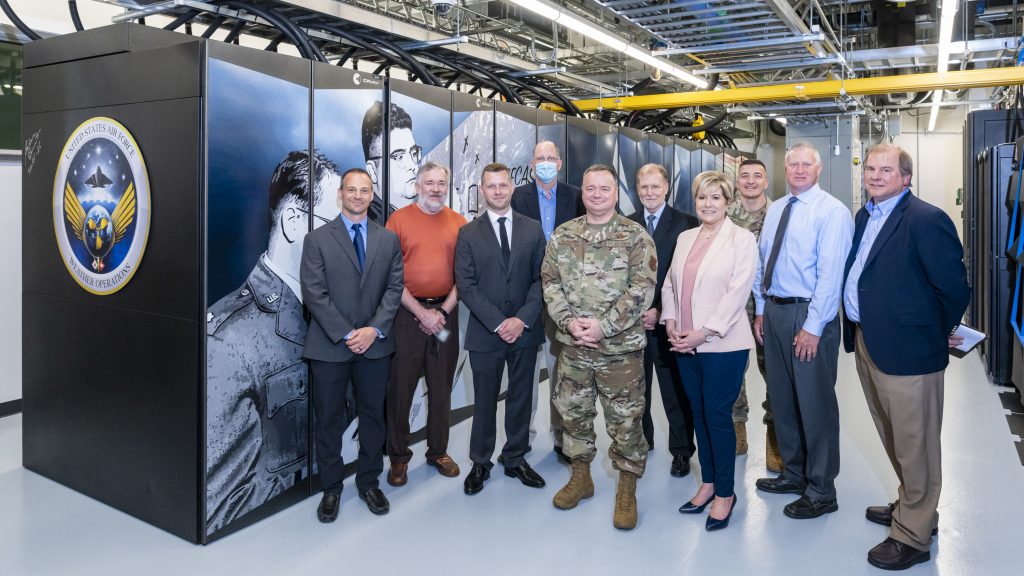
The ribbon cutting was attended by several staff members from ORNL and members of the US Air Force, including (from left to right) Paul Peltz, Jeff Nichols, Dustin Leverman, Alan Icenhour, Charles McDaniel, Steven Wert, Gina Tourassi, Colonel Michael Marsicek, Jim Rogers, and Johnny Moore.
The HPC11 weather forecasting system provides the computational capabilities necessary for Air Force Weather’s modeling operations team to generate high-resolution global and regional weather models. These models support the planning and execution of worldwide missions. The system is currently supporting Air Force, Space Force, and Army forces with high-fidelity mission weather data from the Air Force’s Global Air Weather Exploitation Model.
Alongside the operational products, ORNL and Air Force Weather continue to collaborate on other science objectives to the benefit of both organizations. These activities leverage the computational white space on HPC11—computing resources within the system that are not actively being used for Air Force Weather production.
In a separate meeting, Christine Chalk, US Department of Energy (DOE) program manager for the Oak Ridge Leadership Computing Facility, expressed her gratitude for the collaboration between ORNL and the US Air Force, saying, “This collaboration has had such an impact, not only in supporting operational weather forecasting, but also from synergies with DOE mission efforts at ORNL. It is an excellent example of a mutually beneficial strategic partnership.”
During the ribbon cutting, McDaniel and Wert expressed similar appreciation for the partnership as well as the rich history of weather forecasting in the US Air Force. “This partnership has provided the Air Force with a premier HPC system significantly more capable than existing systems for weather modeling development and operations,” said Wert. “Oak Ridge’s expertise in HPC design and operations has produced a highly resilient system that can adapt to future needs, such as the addition of graphic accelerators to provide a pathway to machine learning activities that will support Air Force Weather through fiscal year 2030.”
“I think about Major Fawbush and Captain Miller making that first tornado forecast in 1948 and what they would think if they could see how far we’ve come,” said McDaniel. “This system and the results of our partnership are carrying on their legacy. When I look forward, I see challenges that Air Force Weather will face and know the capabilities that HPC11 brings us will be there to allow us to meet our mission objectives.”
McDaniel and Wert recognized Jim Rogers, Dustin Leverman, and Paul Peltz for their dedication and support of the partnership by presenting them each with an Air Force Director of Weather and PEO challenge coin. A military tradition, challenge coins are presented by unit leaders in recognition of special achievement. In this case, the three laboratory personnel were key to the successful, timely, and within-budget procurement, installation, and operation of HPC11 in meeting Air Force Weather’s numerical weather prediction mission.
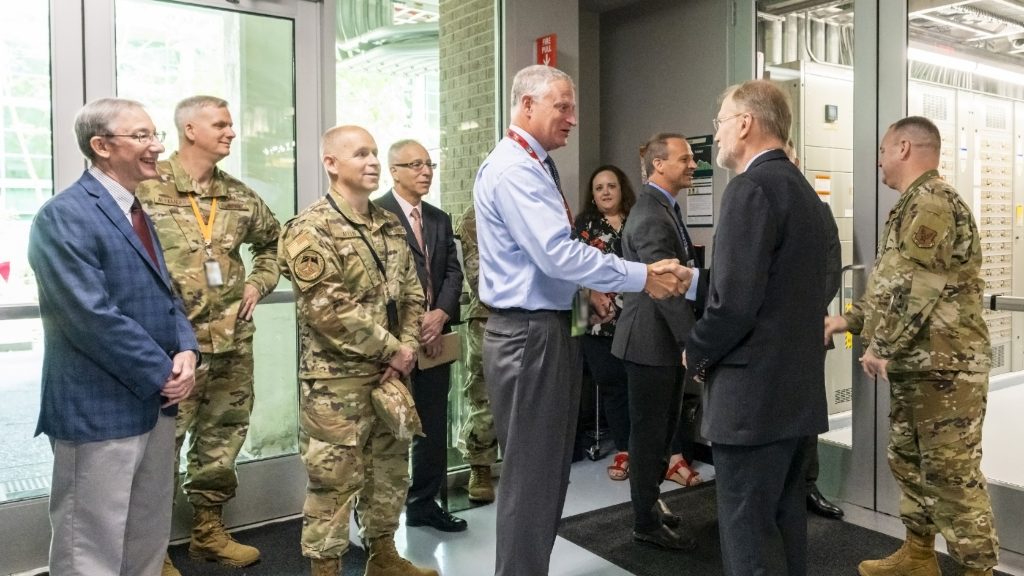
Brigadier General Charles McDaniel (far right) and Steven Wert present Air Force Director of Weather and PEO Digital challenge coins to ORNL’s Jim Rogers (center), Paul Peltz, and Dustin Leverman. The coins were presented in recognition of their management and support of the procurement, installation, and successful operation of HPC11.


